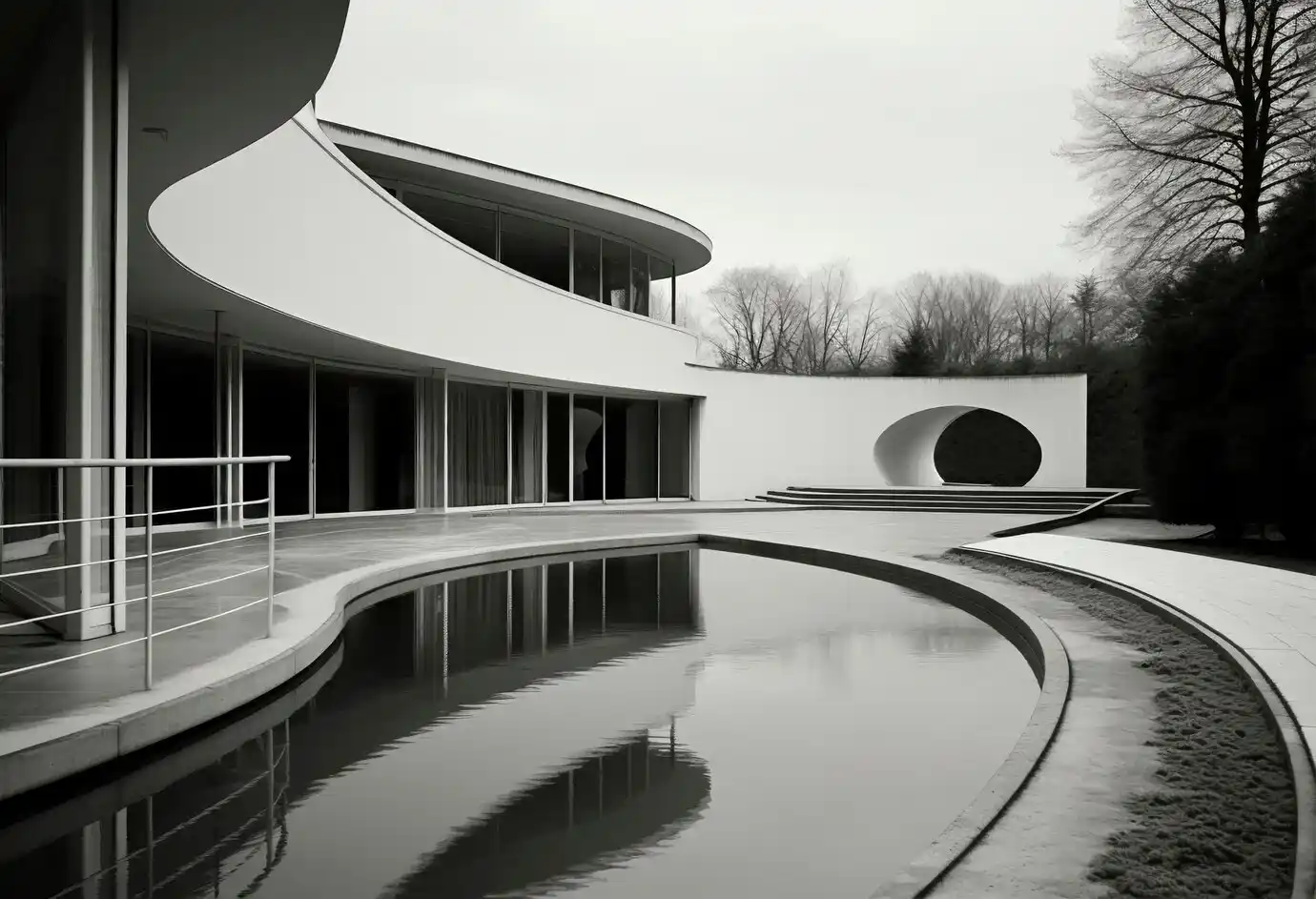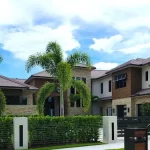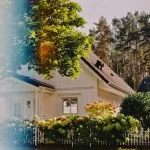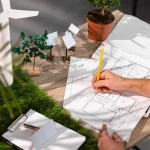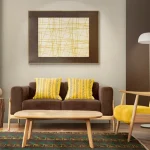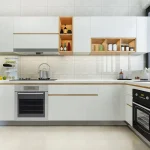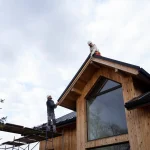There’s something magical about the way a stunning exterior can transform a house into a home. Whether you’re designing a new home or renovating an old one, the exterior is the first impression and the lasting image. As the renowned American architect Frank Lloyd Wright once said, “I believe in the organic principle, that the outside and the inside are one.” This philosophy reminds us that the exterior of our homes should reflect the warmth and comfort we feel inside.
The Charm of Traditional Styles
Traditional architectural styles have a timeless appeal that many homeowners cherish. From the classic Colonial to the romantic Victorian, these designs evoke a sense of history and nostalgia. I remember visiting my grandparents’ Colonial home as a child, with its symmetrical facade, shuttered windows, and welcoming front porch. It felt like stepping into a storybook.
Colonial Homes
Colonial homes are characterized by their symmetrical design, often with evenly spaced windows and a central door. These homes usually feature brick or wood siding, and their simplicity is their charm. To enhance a Colonial exterior, consider adding classic lantern-style lighting and a stately front door in a bold color.
Victorian Homes
Victorian homes, on the other hand, are known for their ornate details, including intricate trim, gables, and vibrant colors. The exterior of a Victorian home can be a canvas for creativity. Think about adding decorative railings, stained glass windows, and a whimsical color palette to bring out the character of the home.
Modern and Contemporary Elegance
Modern and contemporary homes stand out with their clean lines, minimalist designs, and innovative use of materials. As Japanese architect Kazuyo Sejima puts it, “Architecture is not about objects but about the space around them.” This idea is evident in modern exteriors emphasizing open spaces and environmental connection.
Mid-Century Modern
Mid-century modern homes are a popular choice for those who love simplicity and functionality. These homes often feature flat planes, large glass windows, and integration with nature. To create a stunning mid-century modern exterior, focus on natural materials like wood and stone, and consider landscaping that complements the house’s sleek lines.
Contemporary Homes
Contemporary homes push the boundaries of design with unique shapes and innovative materials. These exteriors often incorporate glass, metal, and concrete to appear striking. Adding a green roof or vertical garden can soften the look and integrate the home with its surroundings, making it both beautiful and eco-friendly.
Blending with Nature
The relationship between a home and its environment is crucial in creating a stunning exterior. As Kengo Kuma, a Japanese architect, states, “I am interested in the way that architecture can mediate between nature and humanity.” This principle is especially important in designs that aim to harmonize with their natural surroundings.
Rustic and Cabin Styles
Rustic homes and cabins are perfect examples of architecture that blends seamlessly with nature. These homes often use materials like logs, stone, and wood, creating a warm and inviting exterior. Imagine a log cabin nestled in the woods, with a stone pathway leading to the front door and a cozy porch with rocking chairs. It’s the perfect retreat.
Coastal Homes
Coastal homes, designed to withstand the elements, often feature materials like shingle siding, metal roofs, and large windows to capture ocean views. The color palette for these homes typically includes soft blues, whites, and sandy neutrals, reflecting the natural beauty of the seaside. Adding nautical elements like rope railings or driftwood decor can enhance the coastal charm.
Innovative and Sustainable Designs
In today’s world, sustainability is a key consideration in architectural design. Creating a stunning exterior doesn’t have to come at the expense of the environment. Jeanne Gang, an American architect, emphasizes that “design is about creating a narrative, a story, and an experience for the people who use a space.” This narrative can include a commitment to sustainability.
Eco-Friendly Homes
Eco-friendly homes incorporate sustainable materials and energy-efficient features. Solar panels, green roofs, and recycled materials are just a few ways to make an exterior both beautiful and environmentally responsible. Imagine a home with solar panels integrated seamlessly into the roof design, native plants in the landscaping, and reclaimed wood for siding. It’s a home that tells a story of care for the planet.
Passive House Design
Passive House design focuses on energy efficiency and reducing the home’s ecological footprint. These homes are built with high-quality insulation, airtight construction, and strategic placement of windows to maximize natural light and heat. The exterior of a Passive House can be modern and sleek, with large windows and simple, durable materials. It’s a design that looks forward to the future while respecting the environment.
Personalizing Your Home’s Exterior
Every home should reflect the personality and lifestyle of its inhabitants. As Julia Morgan, a pioneering American architect, once said, “A house is not a machine to live in. It is a shell, as a snail carries its shell, to make its own for the world.” This sentiment reminds us that our homes should be a true expression of who we are.
Choosing the Right Colors
Color plays a significant role in the exterior design of a home. Angela Wright’s study, “The Psychology of Color in Architectural Design,” explores how different colors can affect our perception and mood. For instance, a soft blue exterior can evoke feelings of calm and tranquility, while a bold red door can make a striking statement. When choosing colors, consider the surroundings and the architectural style of the home.
Adding Personal Touches
Adding personal touches to the exterior can make a house feel like home. This could be as simple as a unique mailbox, custom house numbers, or a seasonal wreath on the front door. I recall visiting a friend’s home where the garden was filled with handmade birdhouses and painted rocks, creating a whimsical and welcoming entrance. These small details made the home stand out and reflected the creative spirit of the homeowners.
Enhancing Curb Appeal
Curb appeal is all about creating a welcoming and attractive exterior that makes a great first impression. Debbie Travis’ guide, “Curb Appeal: The Complete Guide to Designing a Stunning Exterior,” offers practical tips for homeowners looking to enhance their home’s facade.
Landscaping and Outdoor Spaces
Landscaping is a crucial element in enhancing curb appeal. Well-maintained lawns, beautiful flower beds, and strategically placed trees and shrubs can frame a home beautifully. Adding outdoor spaces like a front patio, a porch swing, or a garden bench can also create inviting areas for relaxation and socializing.
Lighting
Outdoor lighting not only improves safety but also highlights the architectural features of a home. Consider installing pathway lights, spotlights for trees, and wall-mounted fixtures near the entrance. The right lighting can transform the look of your home at night, creating a warm and welcoming glow.
Balancing Aesthetics and Functionality
Finding the perfect balance between aesthetics and functionality is key to creating a stunning exterior. Shigeru Ban, a Japanese architect, believes that “the most important thing for an architect is to find a balance between the needs of the client, the restrictions of the site, and the ingenuity of the design.” This balance ensures that the home is not only beautiful but also practical and comfortable.
Practical Considerations
When designing your home’s exterior, consider practical aspects like weather resistance, maintenance, and security. For example, choosing durable siding materials and installing storm shutters can protect your home from harsh weather conditions. Similarly, a well-designed driveway and garage can add to both the functionality and the visual appeal of the home.
Creative Solutions
Innovative design solutions can address practical needs while enhancing aesthetics. For instance, integrating storage solutions like built-in benches with hidden compartments can keep outdoor spaces tidy and stylish. Using permeable pavers for driveways and walkways can improve drainage and reduce water runoff, contributing to a sustainable and attractive landscape.
Conclusion
Designing a stunning exterior is an art that blends creativity, functionality, and a deep connection to the environment. From traditional to modern styles, each home has the potential to become a beautiful reflection of its inhabitants. As you embark on your journey to create a stunning exterior, remember the wise words of architects like Frank Lloyd Wright and Jeanne Gang, and let your home’s design tell your unique story.
In my own experience, the most stunning homes are those that feel personal and harmonious with their surroundings. Whether it’s a cozy cabin in the woods or a sleek modern home with a green roof, the exterior should invite you in and make you feel at home. So, take inspiration from the architectural styles you love, add your personal touches, and create an exterior that is not only beautiful but also meaningful to you.

